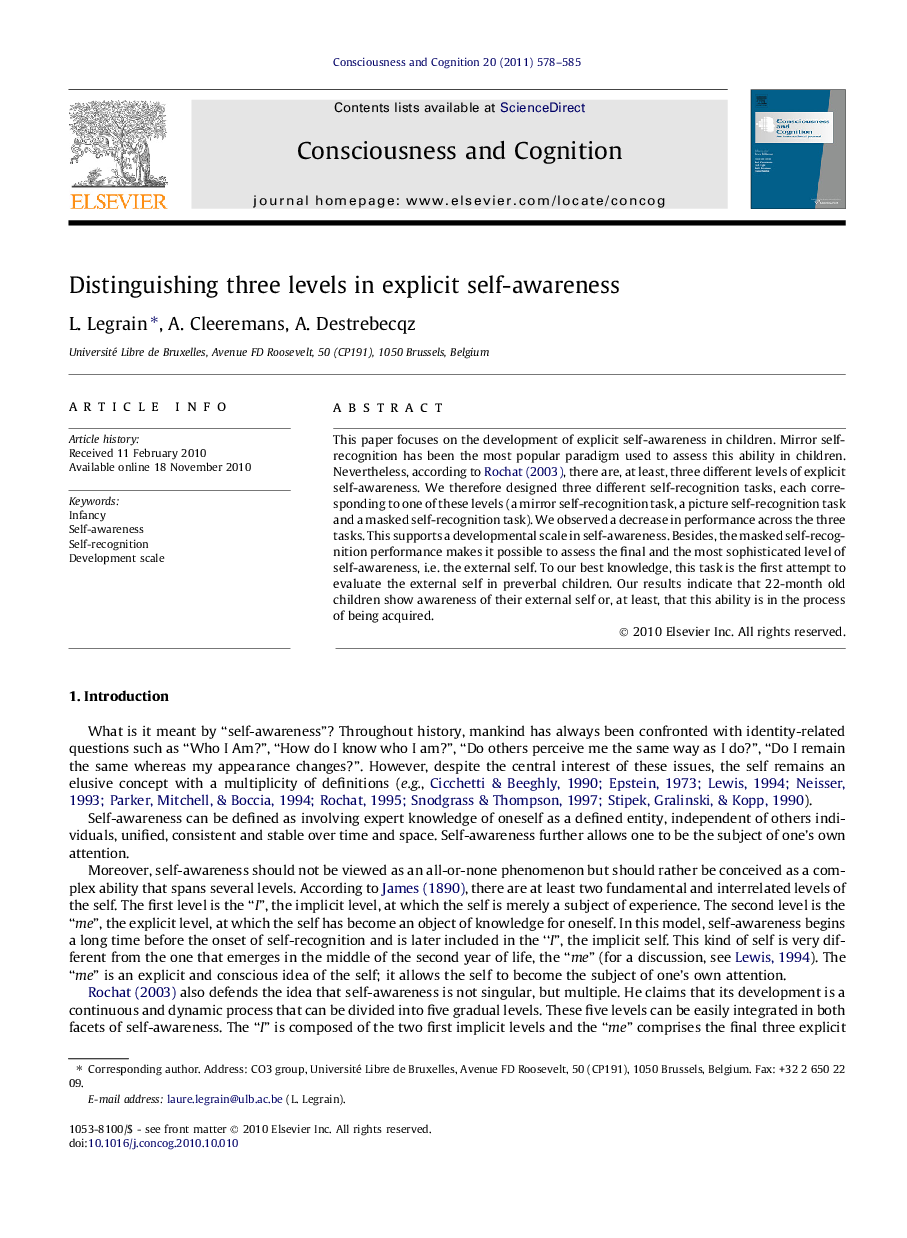| Article ID | Journal | Published Year | Pages | File Type |
|---|---|---|---|---|
| 10458690 | Consciousness and Cognition | 2011 | 8 Pages |
Abstract
This paper focuses on the development of explicit self-awareness in children. Mirror self-recognition has been the most popular paradigm used to assess this ability in children. Nevertheless, according to Rochat (2003), there are, at least, three different levels of explicit self-awareness. We therefore designed three different self-recognition tasks, each corresponding to one of these levels (a mirror self-recognition task, a picture self-recognition task and a masked self-recognition task). We observed a decrease in performance across the three tasks. This supports a developmental scale in self-awareness. Besides, the masked self-recognition performance makes it possible to assess the final and the most sophisticated level of self-awareness, i.e. the external self. To our best knowledge, this task is the first attempt to evaluate the external self in preverbal children. Our results indicate that 22-month old children show awareness of their external self or, at least, that this ability is in the process of being acquired.
Related Topics
Life Sciences
Neuroscience
Cognitive Neuroscience
Authors
L. Legrain, A. Cleeremans, A. Destrebecqz,
